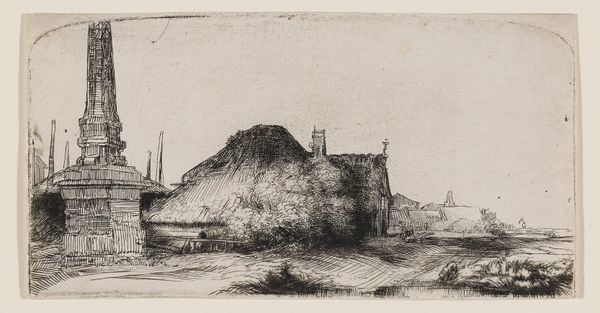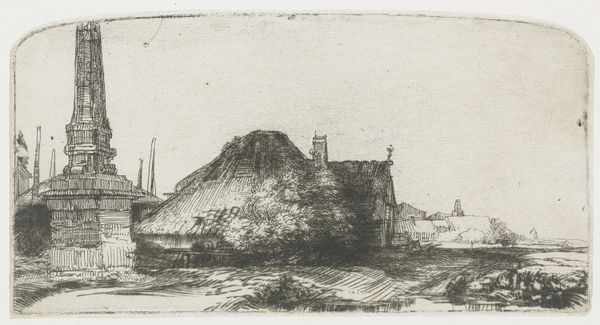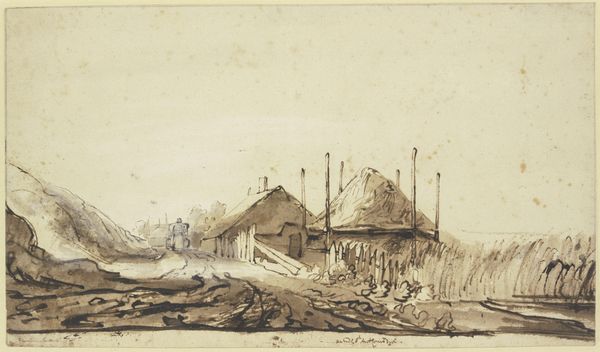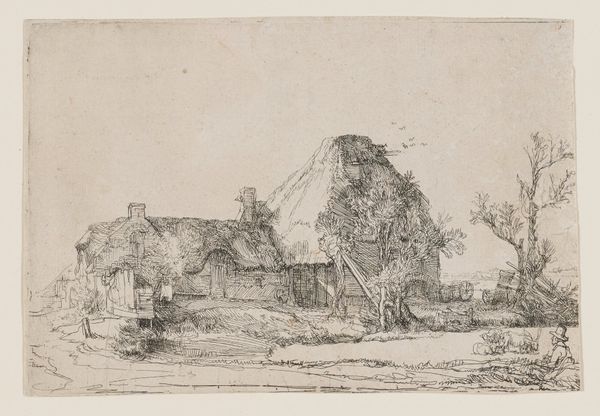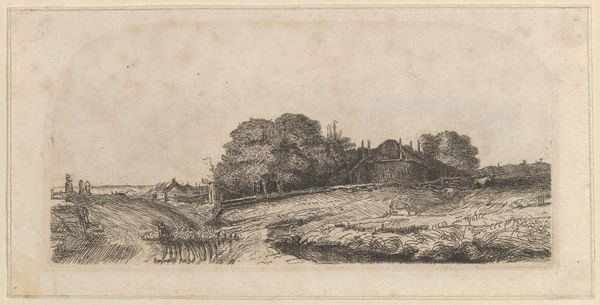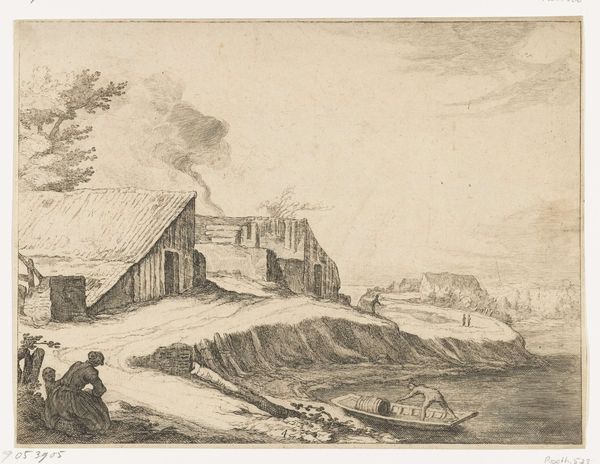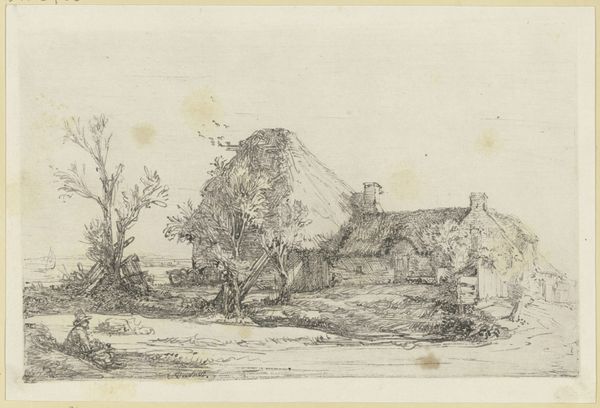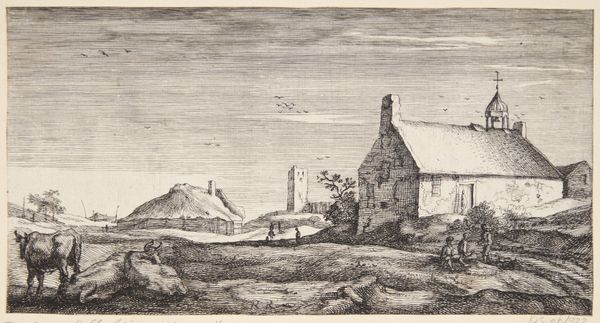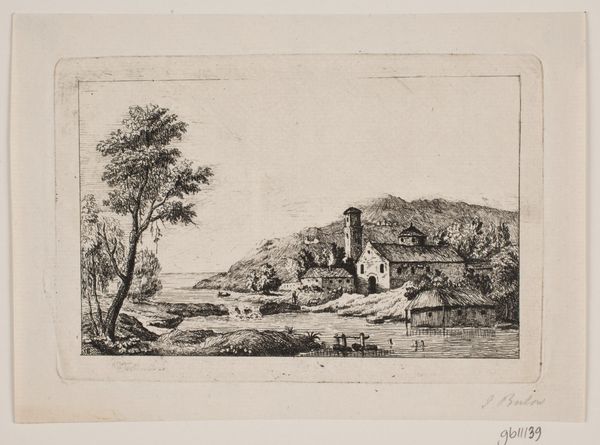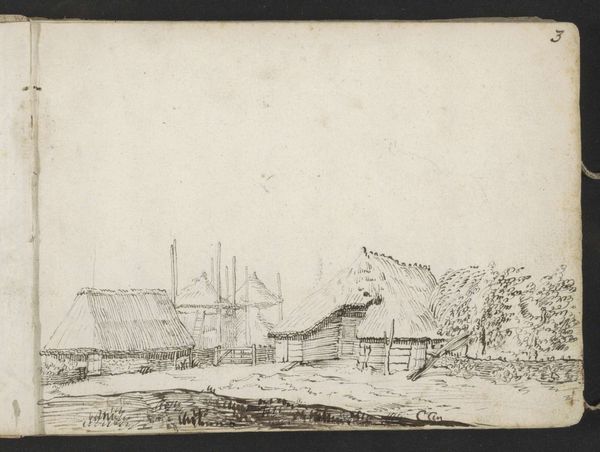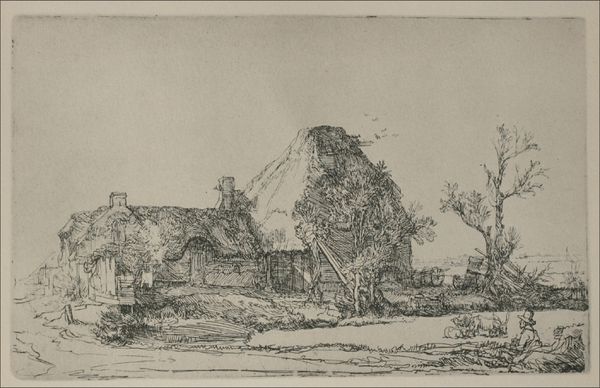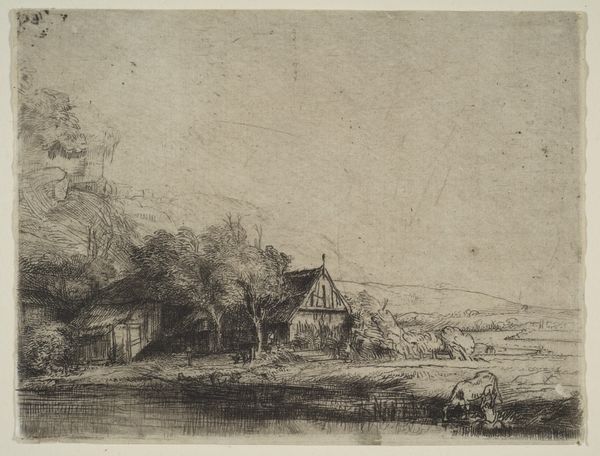
Cottage and Boundary Post on the Spaarndammerdijk ('L'Obelisque') 1645 - 1655
0:00
0:00
drawing, print, etching
#
drawing
#
medieval
#
dutch-golden-age
# print
#
etching
#
landscape
#
geometric
#
line
#
genre-painting
#
northern-renaissance
Dimensions: plate: 3 5/16 x 6 5/16 in. (8.4 x 16.1 cm)
Copyright: Public Domain
Editor: This is Rembrandt van Rijn's "Cottage and Boundary Post on the Spaarndammerdijk," also known as "L'Obelisque," an etching from around 1645 to 1655. It’s currently housed at the Met. The scene feels quiet and rural, with the dark lines of the etching creating a somber yet intimate atmosphere. How do you interpret this work? Curator: Well, immediately, I see a fascinating interplay between the ordered and the chaotic. Look at the stark geometry of the boundary post—almost an obelisk— juxtaposed against the organic, almost overgrown cottage. Consider how the "Dutch Golden Age" wasn't golden for everyone. How does this image engage with questions of land ownership and social hierarchy? What does it mean to mark a boundary so clearly in a landscape presumably worked by those who dwell in such cottages? Editor: So, the boundary post isn't just a marker but also a symbol of power? Curator: Precisely! It’s a visual representation of the structures – both physical and social – that controlled access to land and resources. The boundary post also bears striking similarity to watchtowers of the time. We might consider that Rembrandt, an urbanite, is presenting an imagined divide. Does this presentation normalize or question ownership and labor of that time? Editor: That's a perspective I hadn't considered. Seeing the boundary post as an assertion of dominance in the landscape gives the etching a new dimension. Curator: It pushes us to think critically about whose narratives are centered and whose are marginalized in depictions of landscape, even seemingly neutral ones. Are those working the field depicted here? Editor: Not that I can tell. Thank you, this gives me a whole new framework for thinking about Rembrandt. Curator: Likewise. Examining art through this lens reveals how deeply embedded social and political realities are, even in the quietest of landscapes.
Comments
No comments
Be the first to comment and join the conversation on the ultimate creative platform.
